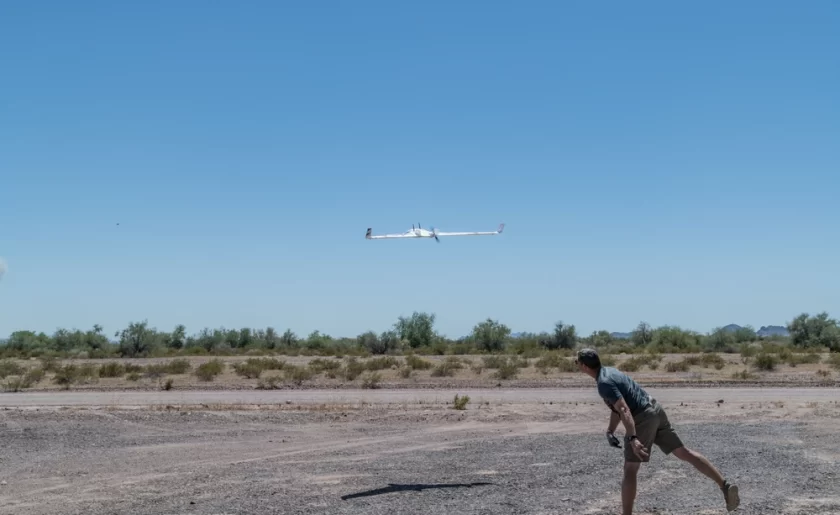The United States Joint C-sUAS Office (JCO) hosted industry demonstrations of the latest counter-small uncrewed aerial systems (C-sUAS) technology at US Army Yuma Proving Ground (YPG) over three weeks in April, focusing on close-range threats in a contested electromagnetic environment (EME).
“We needed to take a closer look at short range defeat capabilities,” said Maj. Matthew Mellor, JCO Technology Demonstrations Branch Chief. “That really guided the weapon system types we were interested in seeing to get away from what we did previously. That was informed by activities in current contingency operations overseas.”
The EME is the ‘background noise’ present in a location and includes everything in the electromagnetic spectrum, from radio and television signals to radiation emitted from microwave ovens. YPG has more than 500 permanent radio frequencies and uses several thousand temporary ones in the typical month, and EME subject matter experts are available on post.
“We were able to obtain information from intelligence surveys to understand what the spectrum looks like in active contingencies and ported that over to the environment at YPG to have a realistic threat environment for these systems to go up against,” said Mellor. “YPG has special hardware emitters that are able to replicate that type of environment, which is critical for us to get after our objectives.”
The April demonstration looked at a wider spectrum of C-sUAS technology than previous iterations. The Department of Defense separates UAS into five groups based on their size, operating altitude, and speed, with larger numbers signifying larger and more capable crafts. Group 1 UAS, for example, are handheld devices that weigh no more than 20 pounds, while Group 3 UAS weigh as much as 1,320 pounds.
“In this demo, the two focus areas are systems that can defeat larger Group 3 targets and dismounted systems that a soldier can wear or carry that can defeat smaller Group 1 and 2 targets,” said Hi-Sing Silen, test integration manager for the JCO. “Even though the ranges we are looking to have effects at are the same for both, the threat and how you approach them are different.”
The methods to detect, track and identify threats differed by vendor, as did defeat mechanisms. Some vendors provided kinetic interceptor defeats that shoot a target out of the sky, while others brought electronic warfare systems or combined aspects of other mechanisms.
“From a dismounted perspective, we were interested in anything and everything they could bring,” said Silen. “Most of the systems that were ready for the demonstration were electronic systems for detection, tracking, and defeat. For the larger Group 3 targets we were looking for kinetic effectors.”
The testers watched for any anomalies and took notes on each system being demonstrated. Though the ranges under investigation were shorter than in some of the previous demonstrations, the testers still made use of YPG’s ample range space to make the demonstration a success.
“The range we are engaging the effects at is shorter, but we still need to have the airspace to launch and recover the threats,” said Silen. “There is also the range we need to allow the systems under demonstration to detect, identify, and track the threat systems prior to engaging. We are trying to inject some operational flavor into developmental testing profiles to make it relevant.”
The demonstrations facilitate a ‘buy-try-decide’ process that rapidly fields anti-drone technology to soldiers. “Once we are finished with the demonstration, we identify the systems that we feel performed in a superior manner and solicit a request for prototype proposal to those vendors and eventually move into facilitating a contract to buy a few of the systems that performed well,” said Mellor. “Once we have the data from both the demonstration and subsequent operational assessments, we have the opportunity to decide whether we want to continue to invest in these systems or procure them at scale.”
For more information
Image: US Army Yuma Proving Ground photograph from a 2024 C-sUAS demonstration




